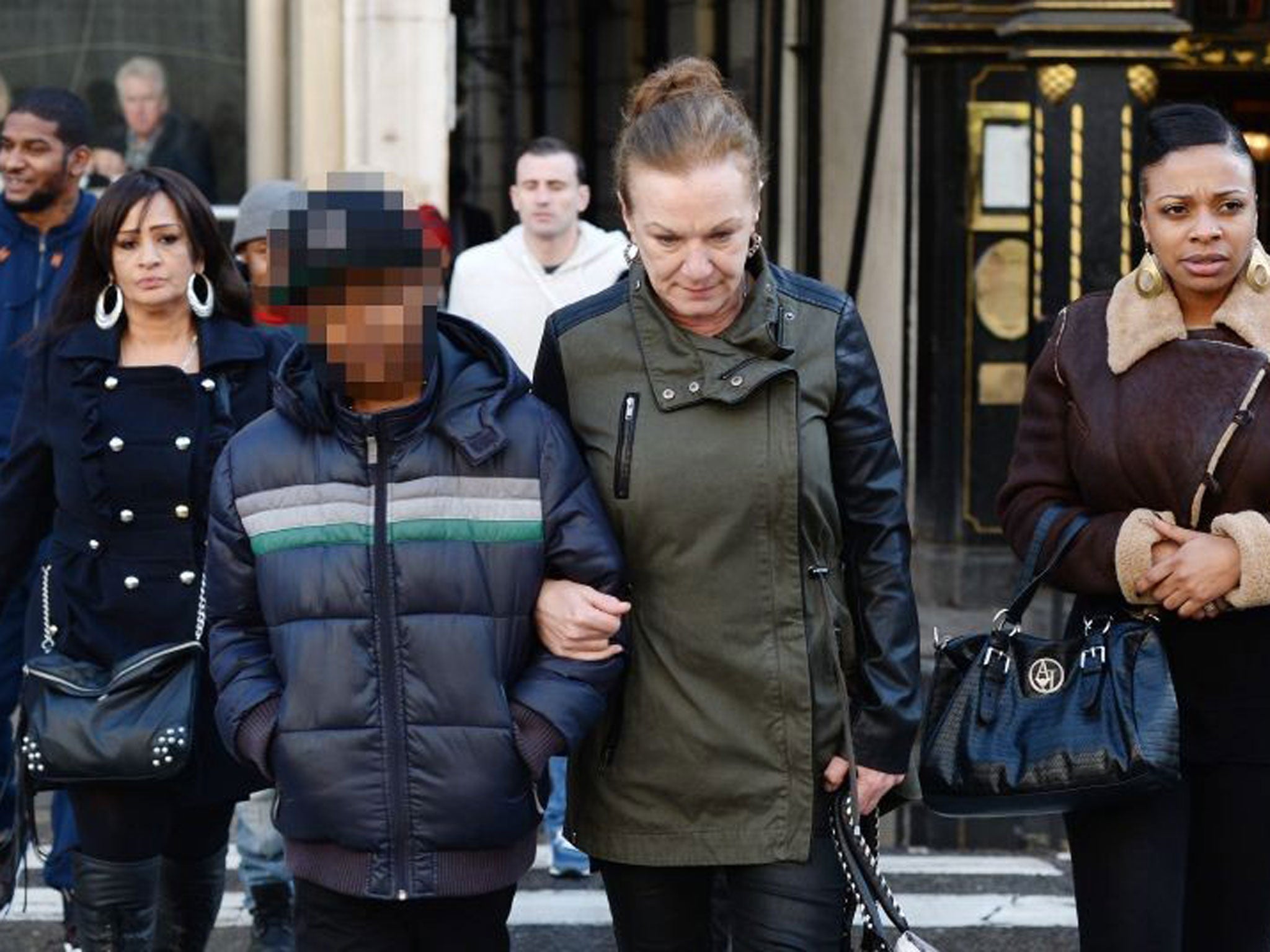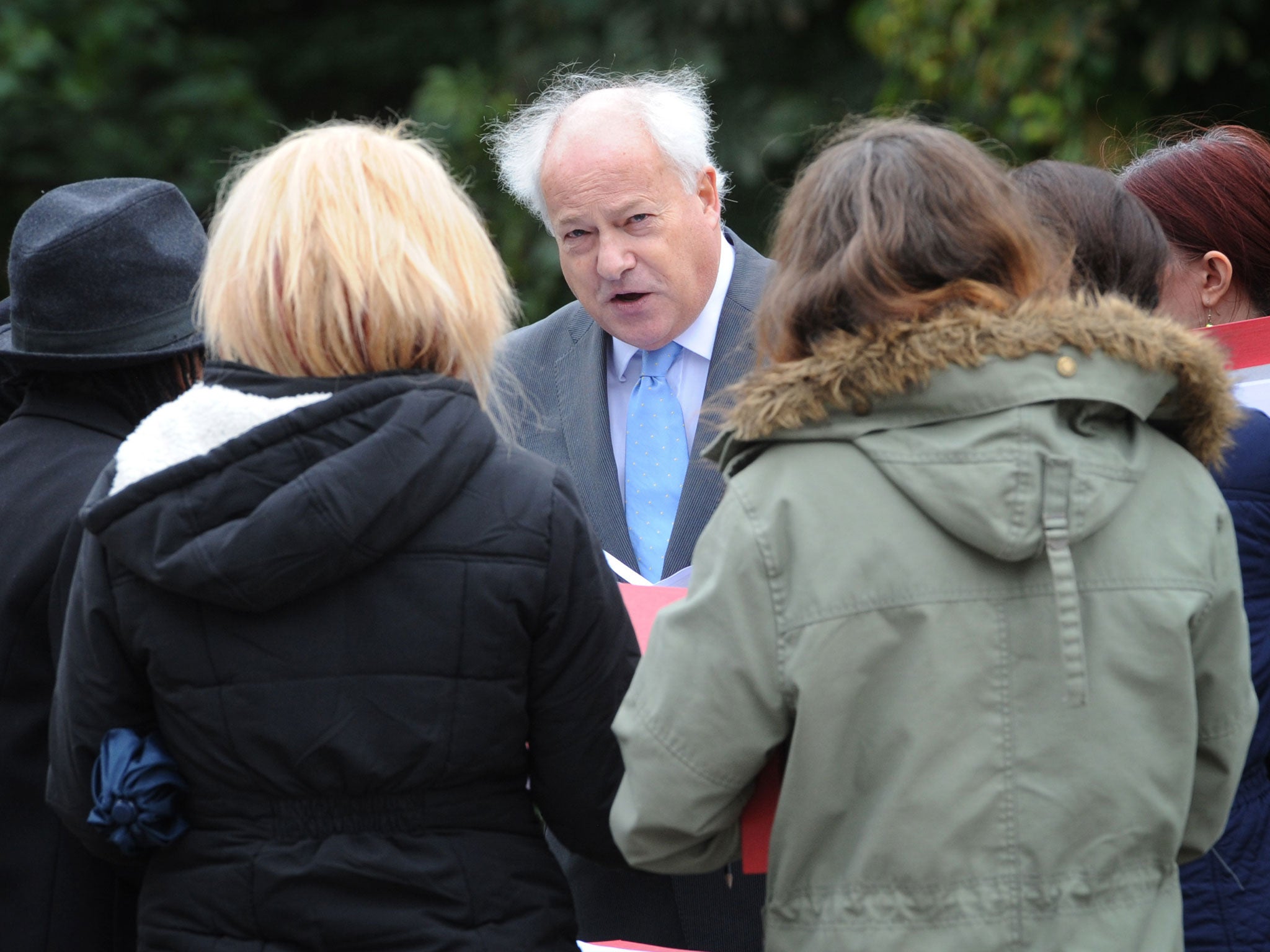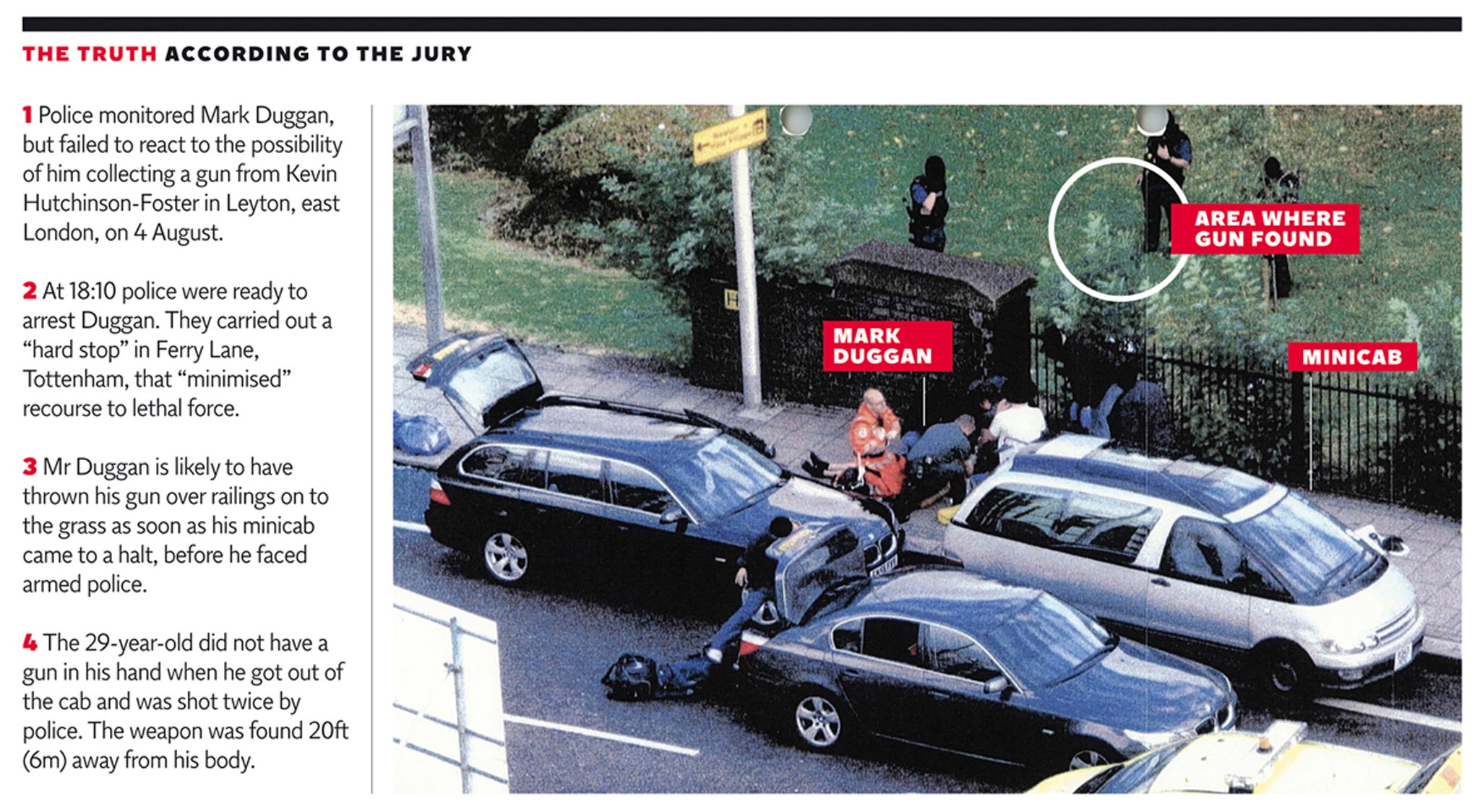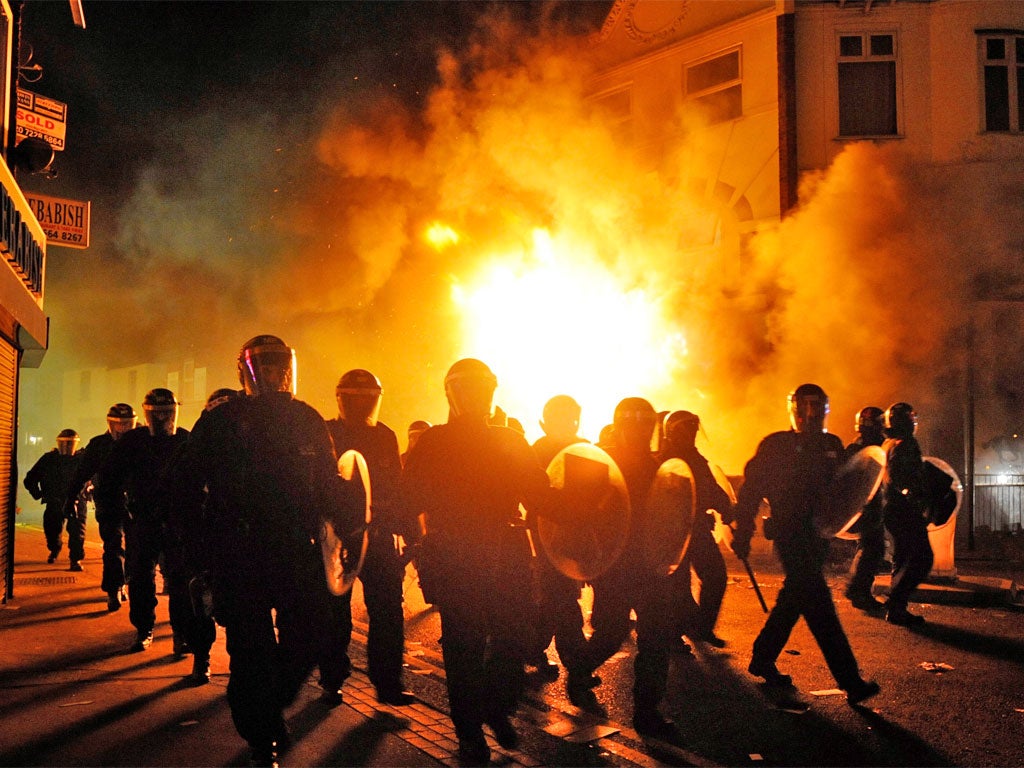Mark Duggan inquest key evidence: Was he really armed? Were the police under threat?

To the police on the job, it started with a "textbook" stop of a minicab carrying a dangerous gangster. Three police cars forced Mark Duggan's vehicle to pull over following intelligence that he had picked up a gun from a criminal associate.
Half-an-hour later, the 29-year-old was dead, fatally wounded by two police bullets after he got out of the car. The authorities wrongly said that he had been hit in an exchange of fire.
Two nights later, Tottenham in North London was alight and riots started to spread across the country, costing millions of pounds in damages, devastating communities and swamping the criminal justice system.
"The Duggan family didn't start the riots, I didn't start the riots, but you can't ignore the fact that London and the country's burning, to a certain degree because of what's happened," the officer who fired the fatal shots, named only as V53, told the inquest.
More than two years later, jurors at Mr Duggan's inquest were told that they were on a "quest to find the truth" in the most detailed examination of the circumstances surrounding the death.
For three months, the jury examined the evidence of 93 witnesses in a case with major implications for police credibility and community relations.
How much of a threat was Mark Duggan?
Mark Duggan was an active member of one of the most serious criminal gangs in Europe and was believed to be responsible for shooting a man in a nightclub, the inquest heard.
The 29-year-old was considered one of 48 core members of the gang and was arrested a number of times for "serious" offences, according to senior police. In 2003, he was investigated over the murder of Gavin Smith at the Broadwater Farm Estate in Tottenham but there was not enough evidence to charge him.
Two months before he died, intelligence reports suggested he was storing drugs at his home, and intent on getting hold of a gun. Further reports suggested that he had fired shots in a nightclub car park.
A police report suggested that there was "a wealth of current reliable intelligence" that he had ready access to guns. However, officers accepted that some of the intelligence was of a quality equivalent to someone hearing a conversation in a pub.
He had been "very, very lightly convicted," the inquest heard. He had never served time in prison, and his most serious convictions - for receiving stolen goods and possession of cannabis - had resulted only in fines, the most recent in 2007.
His family painted a different picture of the father-of-four. His mother said that Mr Duggan had been shy and quiet while he was growing up and was known as "my handbag" because he was so clingy.
Could he have been stopped before he got the gun?
The officer who fired the fatal shot told the inquest that he opened fire after Mark Duggan pointed a gun at him. But did officers have the intelligence to have moved in earlier - and would they have had the evidence to prosecute?
Police intelligence documents that detailed how Mark Duggan became the focus of an offshoot of Operation Dibri, a Scotland Yard operation set up in 2008 to target the gang after a surge in gun violence. Over four days in August, senior officers identified six members of the gang for a smaller operation, including Mr Duggan.
The inquest jury found unanimously that both Scotland Yard and the Serious and Organised Crime Agency could have done more to "gather and react" to intelligence prior to Mr Duggan collecting the weapon from Hutchinson Foster. In particular, the jurors found that more could have been done to keep Mr Duggan under surveillance after police lost contact with him the night before his death.
Intelligence in June indicated he had been offered two guns for sale, and he was trying to sell one. Further information made it clear that that Mr Duggan was set to receive a gun from a man called Kevin, but only days before his death did police narrow it down to underworld drug dealer Kevin Hutchinson-Foster.
He was believed to be storing the gun with a woman associate, but that person had not been identified on the day that he died, according to police. DNA evidence later showed that Hutchinson-Foster had used the same gun that he later passed to Mr Duggan to pistol-whip a man at a barber shop in Hackney. But the inquest heard that the victim in that case was unwilling to cooperate and no gun had been mentioned when police investigated that case.
A police briefing note the day before the Mr Duggan's fatal shooting revealed the likelihood of the handover of the gun between the two men. Hutchinson-Foster has since been jailed for supplying the gun
Police however said that the first time they received intelligence about where the gun was being held was an hour before the shooting. They believed it was to be taken to the Broadwater Farm Estate for short-term storage before an attack on a gangland rival.
The senior officer told the inquiry that they wanted the handover to take place before they stopped the car. They ruled out moving in at that location because the narrow streets had homes and schools nearby. The inquest jury broadly agreed, finding that the police had chosen a place to stop the taxi which "minimised to the greatest extent possible recourse to lethal force".

Was the shooting necessary?
The police marksman told an inquest that he was 100 per cent convinced that Mark Duggan was carrying a weapon when he emerged from the minicab.
The officer, known only as V53, says that he fired on Mr Duggan in self-defence because he was pointing a gun, hidden in a sock, in his direction.
"The only thing I was focused on was the gun," V53 told the inquest. "The next thing he starts to do is move the gun away from his body. There's a line in the sand now, there's a tipping point… it's now my honestly held belief that he's going to shoot me."
He fired two shots from his Heckler and Koch carbine, hitting him in the chest and arm. One of the shots went through the body of Mr Duggan and embedded in the radio of a fellow firearms officer, W42. The officer said that as Mr Duggan fell backwards, he could no longer see the gun.
More than anything else, it is the whereabouts of the Bruni Olympic pistol at the moment he was shot that was the key to whether Mr Duggan was killed lawfully or not.
The jurors had to pick their way through multiple - and often conflicting - accounts of those confused few moments.
Another person, Witness B, claimed that the weapon was in fact a mobile telephone and that Mr Duggan appeared to be surrendering when he was shot. Just a few seconds before the shooting, Mr Duggan had been speaking with his brother Marlon in an unhurried three-minute phone call, his brother told the inquest.
A text sent just before he was killed read: "Watch out for a Green BMW van. It's Trident (the gang crime unit), they just grabbed me."
Witness B, who was watching from the ninth floor of a housing block on the other side of the road, claimed that he saw Mr Duggan with a Blackberry phone in his hand when he was shot. "It was an execution," he told a journalist. He said the phone was still in Mr Duggan's hand when he went to get his own mobile to record the aftermath of the shooting.
The witness, who said he did not trust the police or investigators, denied changing his story from his initial account that he saw Mr Duggan with a gun.
How did the gun end up 20ft away?
If he was shot with a gun in his hand, how did it end up behind a fence up to 20 feet away inside a sock? But if it was planted - a claim fiercely denied by officers involved in the shooting - why would anyone put it there?
Lawyers for the family allege that a police officer removed a handgun from the minicab after Mr Duggan was shot and planted it in the grass behind a fence.

(Click here for enlarged graphic)
The barrister for the Duggan family, Leslie Thomas, questioned how a member of the police team, V59, had been caught on CCTV cameras walking to where the gun was found.
"I'm going to suggest to you, V59, that you knew where the gun was before the officers had gone round, because you and all of your colleagues had planted it there," he said.
The officer replied: "I find that highly offensive. No I didn't plant any gun at the scene."
The last person to see the gun was V53, according to his evidence. Nobody saw an object flying through the air to land over the fence.
Another officer, W70, reported seeing a gun-shaped object in Mr Duggan's hand - but not inside a sock - while others said that either he was facing the wrong direction, or his hands were hidden from view.
An expert witness, Prof Jon Clasper, said Mr Duggan could not have thrown the gun after he was shot, but said that he could have been in the act of throwing when he was hit.
A Metropolitan police officer, who was there to support the IPCC, wrote in a statement that during informal briefings at the scene he was told that "officers had apparently thrown a firearm found in his possession over a fence so that it was out of reach and it would no longer pose a threat to them". No officer said that happened.
Video footage shows an officer disappearing behind the minicab for around 11 seconds, and one witness known only as Miss J, claimed that she had seen an officer go into the minicab and come out with a gun. "As I keep stating, I remember somebody coming out of the car. They had a handgun but I cannot remember. I saw a gun, I am not a mad woman," she told the inquest. Police said nobody went into the minicab.
Ultimately, the jury reached a different conclusion. The seven women and three men found by a majority of nine to one that Mr Duggan had thrown the weapon he was carrying clear of the taxi as police pounced. He was shot outside the car seconds later.
The aftermath
The police watchdog accepted that it misled journalists that shots were exch

Detective Superintendent Fiona Mallon, strategic firearms commander for north London, made a note from a telephone call from a senior officer involved in the operation within a few minutes of the shooting saying that "apparently MD came towards officers firing."
The alleged failure by the Independent Police Complaints Commission and the police to provide information about the death was cited as part of the reason for protests outside Tottenham police station on 6 August. That peaceful protest descended into rioting that spread across Britain.